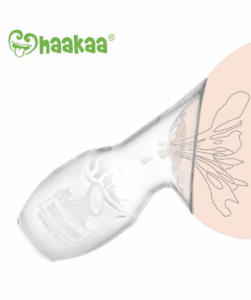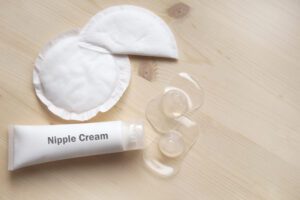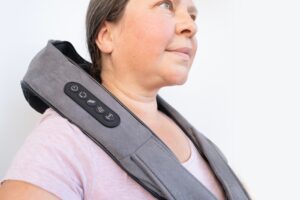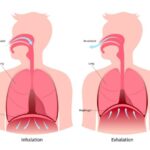You may be asking yourself, “Why is a physical therapy blog addressing the topic of breastfeeding?” I have been on a journey with my kiddo as we go through the first hand experience of the challenges and bonding that comes with breastfeeding in the modern era. As I prepared for my goals to nurse my daughter during pregnancy, I did much reading and research and was not surprised to learn that breastfeeding has many short term and long term effects for baby and mom. For the purposes of this blog I am going to focus on some tips or hacks to help mom when breastfeeding can become painful.
It is crucial to note that some moms are unable to breastfeed for a myriad of reasons. It is important that these moms do not feel shame or defeat. This is a very personal topic, and our goal is to highlight methods of self care.
Effective Self-Treatment Approaches for Common Breastfeeding Challenges
Breastfeeding can be a beautiful and rewarding experience, but it also comes with its fair share of challenges. Common issues such as clogged milk ducts, chapped or bleeding nipples, engorged breasts, and related neck and back pain can make this journey difficult. Fortunately, there are several self-treatment approaches that can help alleviate these problems and support a smoother breastfeeding experience. Here’s a guide to addressing these common obstacles.
1. Clogged Milk Ducts
Clogged milk ducts occur when milk flow is obstructed, leading to tenderness, swelling, and sometimes a lump in the breast. Here’s how you can address this issue:
- Breastfeeding or Pumping: Even though it is uncomfortable, the best way to clear the clog is to have your baby help you.
- Proper Latching: Ensure baby is latching on correctly. This is when to access the collaborative team of a FMT and a lactation consultant.
- Warm shower: Jumping in the shower and gently moving your breasts around.
- Massage: Gently massage the clogged area in a circular motion starting at the chest wall and working toward the areola/nipple while in a warm shower, feeding or using a Haakaa.
- Haakaa: If you can’t get in the shower fill your Haakaa with warm water and gently massage the breast.

- Hydration and Rest: Drink plenty of water and get enough rest. Staying hydrated and well-rested supports overall milk production and flow.
- Avoid Tight Clothing: Wear loose-fitting bras and clothing to avoid constriction that can worsen the blockage. This includes nursing pads that may be saturated.
**It is important to note that when a clogged milk duct becomes infected it creates mastitis. This is a serious condition and needs to be addressed immediately by your primary care provider or obstetrician.
2. Chapped or Bleeding Nipples
Chapped or bleeding nipples can cause discomfort for both the mother and the baby and may lead to latching difficulty and insufficient milk intake. Here’s how you can ease this:
- Air exposure: Let your nipples air dry after feedings whenever possible.
- Nipple cream: Use a lanolin-based nipple cream, such as Lansinoh, to soothe and protect your nipples.

- Warm/Cold compresses: Apply a warm compress to your nipples before breastfeeding to help with pain relief. After feeding, a cool compress can help reduce inflammation.
- Breast pads: Use absorbent breast pads to keep your nipples dry and prevent friction.
- Avoid harsh detergents: Use gentle laundry detergents on your bras and clothing to prevent irritation.
- Correct Positioning for latching: Hold your baby in a comfortable and supported position. The baby’s head, neck, and body should be aligned. The baby’s mouth should cover a good portion of the areola, not just the nipple. Here are Tips for First Time Moms for Breastfeeding which provides ideas for positioning.
- Use Nipple Shields: If nipple issues persist, consider using a nipple shield temporarily to help the baby latch more effectively with less pain and allowing tissues to rest.
- Seek Professional Help: If difficulties continue, seek a lactation consultant and doctor to care for your skin. They can provide personalized guidance and support.
3. Engorged Breasts
Breast engorgement occurs when the breasts become overly full and swollen, often causing discomfort. Here’s how to relieve engorgement:
- Feeding or pumping: Breastfeed or pump frequently to relieve pressure. This is a little tricky when your baby is young because sorting out the supply level requires some trial and error.
- Cold Compresses: Apply cold compresses or chilled cabbage leaves to the engorged areas to reduce swelling and pain. Use the compresses for 10-15 minutes at a time. I love a chilled facial roller for this.

- Gentle Massage: Gently massage the breasts to help with milk flow and reduce engorgement. Use your fingers in a circular motion from the outside of the breast towards the nipple.
- Avoid Over-Pumping: Over-pumping can lead to increased milk production and worsen engorgement. Pump only as needed to relieve discomfort.
- Proper Bra Fit: Wear a supportive, well-fitting bra to provide comfort and avoid additional pressure on the breasts. This includes nursing pads that may be saturated.
4. Neck and Back Pain Due to Breastfeeding
Breastfeeding can sometimes lead to neck and back pain due to the posture and positioning required. Here’s how to alleviate this discomfort:
- Positioning: Use supportive pillows to help position your baby at breast height. A breastfeeding pillow can reduce strain on your neck and back.
- Take Breaks: It is very challenging to unlatch a hungry baby. That is not what I am suggesting. Rather, change your position slightly while baby is still latched to take breaks. For example if your legs are out straight then bend one knee for a little and then the other. Stretch your neck, shoulders, and back to relieve tension.
- Heat Therapy: Apply a warm compress or heating pad to sore areas to ease muscle tension and pain. I also use a mechanical massager that sits on my neck and shoulders when I pump.

- Exercise and Stretching: Incorporate gentle stretching and strengthening exercises into your routine to support good posture and relieve back and neck pain.
- Seek Professional Help: If pain persists, consider consulting a Functional Manual Therapist. We are here to help!
Final Thoughts
Breastfeeding can be challenging, but with the right self-care techniques, you can overcome common issues such as clogged ducts, chapped nipples, engorged breasts, and related neck and back pain. Remember, every mother’s experience is unique, and it’s important to listen to your body and seek professional help if needed. By addressing these issues proactively, you can create a more comfortable and enjoyable breastfeeding experience for both you and your baby.
Reach out to us at one of our IPA Physio locations if you or a loved one need support with breastfeeding or postpartum care. We’re here to help you navigate these challenges and provide the care you need during and after pregnancy.
Resources
- Pump B. Breastfeeding Center for Greater Washington. Breastfeeding Center for Greater Washington. Published 2014. Accessed August 28, 2024. https://www.breastfeedingcenter.org/shop-nursing-supplies/haakaa-generation-1-silicone-breast-pump-4-oz-1-pk
- Nipple L. Breastfeeding Center for Greater Washington. Breastfeeding Center for Greater Washington. Published 2014. Accessed August 28, 2024. https://www.breastfeedingcenter.org/shop-nursing-supplies/lansinoh-lanolin-nipple-cream
- Amazon.com. Amazon.com. Published 2014. Accessed August 28, 2024. https://www.amazon.com/huefull-Roller-Massage-Reducing-Puffiness/dp/B0BCQ1NY5F
- Amazon.com: Shiatsu Neck and Back Massager with Soothing Heat, Nekteck Electric Deep Tissue 3D Kneading Massage Pillow for Shoulder, Leg, Body Muscle Pain Relief, Home, Office, and Car Use: Health & Personal Care. Amazon.com. Published 2020. https://www.amazon.com/Nekteck-Back-Neck-Shoulder-Massager/dp/B01BZOKLOO
- Kelly M. MK Roots Wellness. MK Roots Wellness. Published May 5, 2018. Accessed August 28, 2024. https://www.mkrootswellness.com/blog/upper-extremity-stretches






